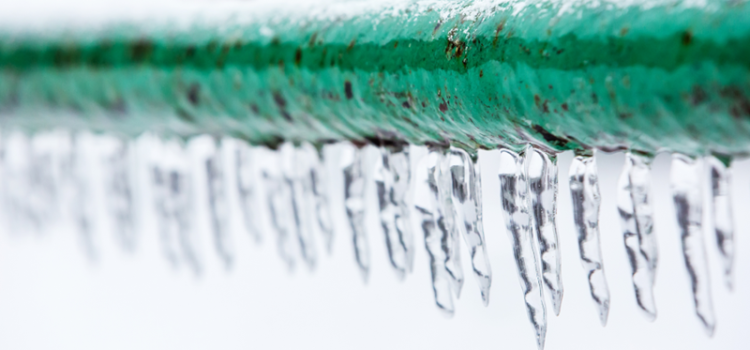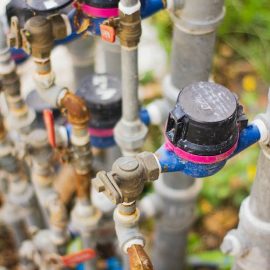
As winter’s icy grip tightens, homeowners face the looming threat of frozen pipes, a common issue that can lead to substantial damage and inconvenience. When water freezes within your pipes, it expands, creating pressure that can cause pipes to crack or burst. The resulting water damage can be expensive to repair and disruptive to your daily life. However, with a proactive approach, you can prevent frozen pipes and safeguard your home during the cold weather months. In this guide, we’ll outline five essential steps to prevent frozen pipes and ensure the well-being of your plumbing system.
-
Insulate Exposed Pipes:
One of the most effective ways to prevent frozen pipes is by insulating them, particularly those that are exposed to the cold air. Insulation acts as a barrier, helping to maintain the water temperature inside the pipes and protecting them from freezing. Foam pipe insulation sleeves, heat tape, and even simple materials like newspaper can be used to wrap pipes. Pay close attention to pipes in unheated areas such as basements, attics, garages, and crawl spaces. Also, focus on pipes along exterior walls or near windows where cold air can infiltrate.
-
Maintain Consistent Indoor Temperatures:
Consistency is key when it comes to preventing frozen pipes. Keep your indoor temperature relatively stable, even when you’re away from home. Lowering the thermostat to save on energy bills might be tempting, but drastic temperature fluctuations can put your pipes at risk. Set your thermostat to a temperature that’s above freezing, preferably around 55°F (13°C) or higher, especially during freezing spells. Opening cabinet doors under sinks can also allow warm air to circulate around pipes, further preventing freezing.
-
Let Faucets Drip:
Allowing faucets to drip during freezing weather might seem counterintuitive, but it’s a clever preventive measure. Allowing a small, steady stream of water to flow through the pipes can help prevent them from freezing. Running water doesn’t freeze as easily as stagnant water. Choose faucets that are farthest from your water source and are prone to freezing, such as those in the bathroom or kitchen. While this approach might lead to slightly higher water bills, it’s a worthwhile investment compared to the potential costs of dealing with frozen pipes.
-
Disconnect Outdoor Hoses and Shut Off Outdoor Faucets:
Outdoor faucets and hoses are particularly vulnerable to freezing due to their exposure to cold air. Before winter arrives, disconnect all outdoor hoses and drain any water from them. Store hoses in a shed or garage to protect them from the cold. Additionally, shut off the water supply to outdoor faucets using the shutoff valve inside your home. Once the water supply is shut off, open the outdoor faucet to allow any remaining water to drain. This prevents residual water from freezing inside the faucet and causing damage.
-
Prepare for Extended Absences:
If you plan to be away from home for an extended period during the cold weather, take extra precautions to prevent frozen pipes. Before you leave, consider shutting off the main water supply and draining the pipes to ensure no water remains inside to freeze. Alternatively, you can ask a trusted neighbor or friend to periodically check on your home and run faucets to keep water flowing. If you have a heating system, set it to a minimum temperature to maintain a suitable indoor climate. Adequate preparation can help you avoid returning to a plumbing disaster and ensure that your home remains safe and comfortable in your absence.
In conclusion, taking proactive steps to prevent frozen pipes is essential to protecting your home during the cold winter months. By insulating exposed pipes, maintaining consistent indoor temperatures, letting faucets drip, and disconnecting outdoor hoses and faucets, you can significantly reduce the risk of frozen pipes and the potential damage they can cause. It’s important to be prepared and take action before the onset of freezing temperatures to avoid costly repairs and disruptions to your daily life. Remember that a little prevention now can save you a lot of hassle and expense later.



